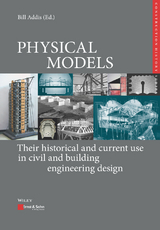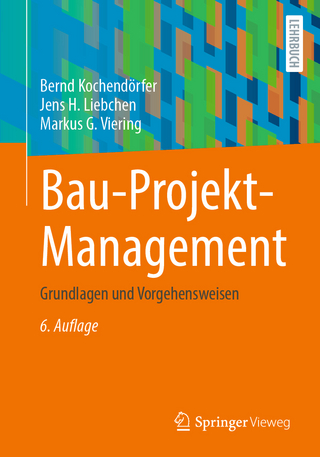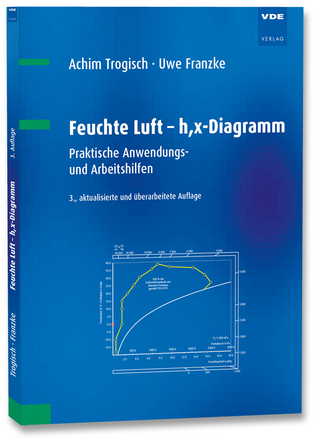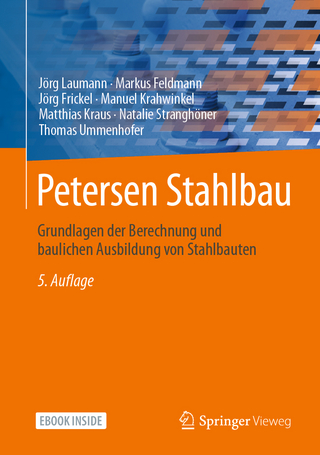
The History of the Theory of Structures
Ernst & Sohn (Verlag)
978-3-433-03229-9 (ISBN)
Karl-Eugen Kurrer was born in Heilbronn, Germany, in 1952. After graduating from Stuttgart University of Applied Sciences with a general civil engineering degree in 1973, he worked as a structural timber engineer for Losberger GmbH in Heilbronn. He then returned to university to study civil engineering and physical engineering sciences at TU Berlin, the city's science and technology university. As a tutor in the Theory of Structures Department at TU Berlin between 1977 and 1981, one of Karl-Eugen Kurrer's most important teaching and learning experiences was grasping the basic principles of structural analysis from the historical point of view. The intention of his handwritten introductory lecture notes on the history of each method of structural analysis was to help students understand that theory of structures, too, is the outcome of a socio-historical everyday process in which they themselves play a part and, in the end, help to shape. Another goal was to create a deeper sense of the motivation for and enjoyment of the learning of structural analysis. It was crucial to overcome the formula-type acquisition of the subject matter by introducing a didactic approach to the fundamentals of theory of structures through their historical appreciation. By 1998 this had evolved into a plea for a historico-genetic approach to the teaching of theory of structures. His dissertation "Entwicklung der Gewölbetheorie vom 19. Jahrhundert bis zum heutigen Stand der Wissenschaft am Beispiel der Berechnung einer Bogenbrücke" (the development of vault theory from the 19th century to today using the example of structural calculations for an arch bridge) was completed in 1981. Since 1980, his many articles on the history of science and technology in general and construction history in particular have appeared in journals, newspapers, books and exhibition publications. Karl-Eugen Kurrer completed his PhD - on the internal kinematic and kinetic of tube vibratory mills (advisers: Eberhard Gock, Wolfgang Simonis, Gerd Brunk) - with the highest level of distinction, summa cum laude, at TU Berlin in 1986 and went on to carry out externally funded research on energy efficiency in industry. He contributed to the development of a new eccentric vibratory mill that uses 50% less energy than comparable models. After 1995 the design successfully established itself on the international machine market (US and EU patents). The head of the "Eccentric vibratory mill" team at Clausthal University of Technology, Prof. Dr. Eberhard Gock (1937-2016), received an innovation award ("Technologietransferpreis der Industrie- und Handelskammer Braunschweig") for this work in 1998. Summaries of the research results from Dr. Kurrer's work at the interface between mechanical process engineering, machine dynamics and raw materials engineering appeared in issues 124 and 282 of series 3 (process engineering) of the progress reports published by the VDI (Association of German Engineers), and also in numerous presentations and journal publications at home and abroad. Between 1989 and 1995, Dr. Kurrer was employed at the Department of Antenna Design of Telefunken Sendertechnik GmbH (head of department: Dr.-Ing. Peter Bruger) in Berlin as a developer of structural systems for large long-, medium- and short-wave antenna systems. He worked on the further development of Telefunken's own program suite for the calculation, dimensioning and design of cable networks for short-wave antennas according to third-order theory. He also contributed to the design of a rotating steel short-wave curtain antenna. For nearly 40 years, Karl-Eugen Kurrer has carried out research on the subject of construction history with a special emphasis on theory of structures. Since 1992, he has been involved in the conference series entitled "Between Mechanics and Architecture", which was established by Patricia Radelet-de Grave and Edoardo Benvenuto. Since 1996, Dr. Kurrer has been Chair of the VDI's Working Group on the History of Technology in Berlin. Between 1996 and February 2018, he was chief editor of Stahlbau and (from 2008) Steel Construction - Design and Research, journals published by Ernst & Sohn (now a Wiley brand). In his capacity as Chair of the History of Technology Working Group, Dr. Kurrer organises, together with Prof. Werner Lorenz (Brandenburg University of Technology Cottbus-Senftenberg), eight lectures on construction history every year for the Deutsches Technikmuseum Berlin. In this capacity, Dr. Kurrer has also organised more than 330 events at the Deutsches Technikmuseum Berlin between 1996 and 2017 - some 140 of them on the history of construction. For his commitment to the field of the history of technology, Dr. Kurrer was awarded the VDI's "Medal of Honour" in 2016. Dr. Kurrer was chairman of the scientific committee of the 3rd International Congress on Construction History (20-24 May 2009, Brandenburg University of Technology Cottbus-Senftenberg, Germany). He has published more than 180 papers and several monographs, e.g. Geschichte der Baustatik (2002, 540pp.), The History of the Theory of Structures. From Arch Analysis to Computational Mechanics (2008, 848pp.) and Geschichte der Baustatik. Auf der Suche nach dem Gleichgewicht (2016, 1184pp.). The first edition of The History of the Theory of Structures was reviewed in 50 international journals. In recognition of his outstanding scientific achievements in the field of the history of construction, Brandenburg University of Technology Cottbus-Senftenberg awarded him an honorary doctorate on 18 October 2017.
Dr.-Ing. Dr.-Ing. E.h. Karl-Eugen Kurrer, geboren am 10.8.1952 in Heilbronn. Nach Realschule und Maurerlehre Studium des Allgemeinen Ingenieurbaus an der Staatsbauschule Stuttgart (heute Hochschule für Technik). Anschließend Bauingenieur im Ingenieurholzbau. Studium des Bauingenieurwesens und der Physikalischen Ingenieurwissenschaften an der TU Berlin; 1982 Diplomarbeit über die Entwicklungsgeschichte der Gewölbetheorie. Danach Promotion an der TU Berlin mit der Dissertation "Zur inneren Kinematik und Kinetik von Rohrschwingmühlen" (1986) und daselbst Fortsetzung der Forschungen zur rationellen Energieverwendung in der Industrie. Entwicklungsingenieur für Antennensysteme bei Telefunken Sendertechnik GmbH in Berlin (1989-1995). Ab Mitte der 1980er-Jahre Entwicklung des wissenschaftshistorisch akzentuierten Ansatzes der Bautechnikgeschichte für die Baustatik, der später zum Konzept einer Historischen Technikwissenschaft verallgemeinert wurde. Von 1993 bis 2010 Mitarbeit an dem von Edoardo Benvenuto (Genua) und Patricia Radelet-de Grave (Louvain-la-Neuve) begründeten Netzwerk "Between Mechanics and Architecture". Seit 1996 Leiter des VDI-Arbeitskreises "Technikgeschichte" in Berlin und Begründer einer Vortragsreihe am Deutschen Technikmuseum Berlin. Chefredakteur "Stahlbau" (seit 1996) und "Steel Construction - Design and Research" (seit 2008) bei Ernst & Sohn. Chairperson des International Scientific Committee des IIIrd International Congress on Construction History (2009) an der BTU Cottbus-Senftenberg. Gründungsmitglied der deutschsprachigen Gesellschaft für Bautechnikgeschichte (2013). Für seine hervorragenden wissenschaftlichen Leistungen auf dem Gebiet der Bautechnikgeschichte wurde er am 18. Oktober 2017 von der BTU Cottbus-Senftenberg zum Dr.-Ing. E.h. promoviert. Kurrer veröffentlichte über 180 Zeitschriftenaufsätze und Buchbeiträge sowie hunderte Rezensionen und Zeitungsartikel. Im Jahr 2002 erschien erstmals seine "Geschichte der Baustatik", der 2008 die wesentlich erweiterte "The History of the Theory of Structures" folgte. In der Tradition legendärer Arbeiten zur Geschichte der Mechanik gelten diese "opera magna" heute weltweit als moderne Standardwerke des wissenschaftsgeschichtlichen Zweiges der Bautechnikgeschichte.
Vorwort der Reihenherausgeber
Zum Geleit von Prof. Ekkehard Ramm
Vorwort zur zweiten englischen Edition
Über die Reihe
Über die Reihenherausgeber
Über den Autor
1 Aufgaben und Ziele der Historiographie der Baustatik
2 Lernen aus der Geschichte: Zwölf Einführungsvorträge in die Baustatik
3 Die ersten technikwissenschaftlichen Grundlagendisziplinen: Baustatik und Technische Mechanik
4 Vom Gewölbe zum Bogen
5 Geschichte der Erddrucktheorie
6 Die Anfänge der Baustatik
7 Die Disziplinbildungsperiode der Baustatik
8 Vom Eisenbau zum modernen Stahlbau
9 Die Stabstatik erobert die dritte Dimension: Das Raumfachwerk
10 Der Einfluss des Stahlbetonbaus auf die Baustatik
11 Die Konsolidierungsperiode der Baustatik
12 Herausbildung und Etablierung der Computerstatik
13 Dreizehn wissenschaftliche Kontroversen in der Mechanik und Baustatik
14 Perspektiven der Historischen Baustatik
15 Kurzbiographien von 260 Protagonisten der Baustatik
Bibliographie
Personenregister
Sachregister
About this Edition
"[...] K.-E. Kurrer's book is a compreshensive treatise on the theories that are used for analysis and design of structures from the earliest days (Archimedes' lever principle) to the present (finite element method). Those who have read the first edition of the book will be surprised by the huge amount of history and knowledge which has been added in the second edition. One can still read the individual chapters in isolation without losing the broad view on the total. The book is well illustrated with pictures, graphs, historical drawings and sketches, which makes for entertaining reading. It contains a wealth of information and is therefore a source for historians, especially interested in the history of technology, but also for professional engineers and graduate students of engineering and art history. The book is a necessary element of libraries and engineering departments."
em. Prof. Dr.-Ing. Dr. h.c. Dr. E.h. Hans-Wolf Reinhardt, University of Stuttgart, Germany (RILEM's website: www.rilem.net, July 2018)
"(...) Der Rezensent empfiehlt vorliegendes Buch wärmstens - auch den Lesern in Polen.
Bauingenieure, Architekten und Umweltingenieure und Studierende der genannten Disziplinen
finden dort zahlreiche Anregungen zum Nachdenken."
Prof. dr hab. inz. Zbigniew Cywinski in "Inzynieria Morska i Geotechnika", 4/2018, S. 313:
About the First English edition 2008
"[...] Ultimately, this is an extraordinary book that should be in every engineering library and on the bookshelf of every structural engineer who aspires to make a difference in the design, development, and preservation of civil infrastructure."
Prof. Sashi K. Kunnath, University of California, Davis, USA (Journal of Structural Engineering, March 2009, pp. 330-331)
"[...] Kurrer's achievement in compiling this book is colossal, and I commend it to anyone interested in the subject. It will, for a long time, stand well along side the other classics of the field - Timoshenko's "History of Strength of Materials", and Eduardo Benvenuto's "Introduction to the History of Structural Mechanics". [...]"
Dr. Bill Addis, Buro Happold, London, UK (International Journal of Space Structures, Vol. 23, No. 3, July 2008, p. 194)
"[...] As you can tell from my enthusiasm, I recommend this highly original study, first as a pleasure to read and a thoughtful examination of new avenues to explain the development of human understanding, and also as an aid and inspiration for further research."
Prof. Dr. Tom F. Peters, Lehigh University, USA (Technology and Culture, July 2009, Vol. 50, pp. 669-674)
"[...] Kurrer's book is truly a masterpiece. In the 800-plus pages, one finds no end of new and interesting pieces of information that contribute to the history of the theory of structures. [...]"
Prof. Dr. Harry H. West, The Pennsylvania State University, USA (Journal of Architectural Engineering, Vol. 14, Issue 4, December 2008, p. 130)
"[...] Whenever you want to learn about the subject or just want to browse through history - this is the book! It is certainly a must for every historically interested engineer as well as for historians of science. "The Kurrer" will become the standard reference book and will stay in that position for many years to come."
Prof. Dr. Thomas Sonar, Institute of Computational Mathematics, Technische Universität Braunschweig, Germany (ZAMP The Journal of Applied Mathematics and Physics, Vol. 60 (2009), p. 581)
"[...] German publisher Ernst & Sohn has brought to the English-speaking public this substantial monograph by Karl-Eugen Kurrer, which is a revised and considerably extended version of the highly successful 2002 German edition Geschichte der Baustatik. The additional content, especially the inclusion of more international developments, makes this book of truly worldwide significance."
Prof. Dr. Andreas Kahlow, Berlin, Germany (Proceedings of the Institution of Civil Engineers - Engineering History and Heritage, Vol. 164, February 2011, Issue 1, p. 55)
"[...] For the time span covered (1575 to the present), this is the most complete recent book on the topic of methods of structural engineering design [...]."
Prof. Dr. Thomas Boothby, The Pennsylvania State University, USA (Isis (History of Science Society), Vol. 100, Issue 3, pp. 639-640 (September 2009))
"[...] The book certainly contains a wealth of interesting information, and I believe that every department of structural engineering ought to have a copy on its shelves."
Prof. Dr. Kolbein Bell, Department of Structural Engineering, Norwegian University of Science and Technology, Trondheim, Norway (Marine Structures, Vol. 22, 2009, pp. 855-856)
"[...] The book contains a wealth of information and will be an important reference text for engineers and historians who wish to understand or write about any specific aspect of the history of structures. Especially, those who teach this subject should find this book to be a rich source of information. It does much more than to discuss the science, however, because we meet the major figures who played significant roles and we learn much about them personally. [...]"
Dr. Hubert I. Flomenhoft, Palm Beach Gardens, Florida, USA (Progress in Aerospace Sciences, Vol. 45, 2009, pp. 80-81)
"[...] Undoubtedly for many readers Kurrer's book represent an excellent opportunity to gain different perspectives and to broaden horizons. For others it will simply be a pleasure to browse and read, and tobe reminded of structural engineering's incredible intellectual underpinnings. Highly recommended."
Prof. Dr. Robert Melchers, University of Newcastle, Callaghan, Australia (Australian Journal of Structural Engineering 2008, Vol. 8, No. 3, p. 259)
"[...] The author had twin goals in writing this book. One was the history of the development of structural engineering in detail, the second was to provide a didactic scientific theory, construction history, and biographical and bibliographic perspective, providing a union between science and the humanities. This goal has succeeded in large measure due to [...] Kurrer's knowledge of the subject and his ability in organizing the material. The English translation from the original German is very good, with only a few typographical errors and solecisms."
Dr. Ralph Francis, University of New Brunswick, Canada (Canadian Journal of Civil Engineering 2008, Vol. 35, pp. 1486-1487)
"[...] Kurrers book is fascinating and it has already become part of my teaching. I would like to recommend it not only to students and civil engineers; it is of great interest to all interested in load-bearing structures, wherever in aerospace engineering, mechanical engineering, sport-equipment industry, etc. It is an opus of uniqueness."
Prof. Dr.-Ing. habil. Norbert Gebbeken, University of armed forces, Munich, Germany (ZAMM Journal of Applied Mathematics and Mechanics, Vol. 88, No. 10, October 2008, p. 792)
"[...] It is clear that Dr. Kurrer has succeeded in combining the rigorous and the romantic in a work that should become classic reading for the discerning mechanician, engineer and architect.[...]"
Prof. Dr. Milija N. Pavlovic, Imperial College London, UK (Engineering Structures, 2008, Vol. 30, p. 2957)
"[...] The history of structural engineering was started by Todhunter and Pearson, and continued by Timoshenko in his "History of Strength of Materials" dating from 1953 (already available in Japanese). After that, half a century passed before this author, based in Europe, presented us with very many original documents that may well attract readers to explore the science of the history of structural engineering by reading this book."
em. Prof. Dr.Eng. Minoru Yamada, Kobe University, Japan (Journal of Architecture and Building Science, Vol. 123 (1582), 2008, No. 11, p. 77)
"[...] It is the first to offer an overview of the development from the conventional structural theory to structural and computional mechanics during the last century. Brief summaries of the development of common calculation methods, supported by historic sketches, provides insides to the history of structural mechanics and present-day calculation methods."
Dipl.-Ing. Dietmar Rippegather, Editor-in-Chief "Welding and Cutting" (Welding and Cutting, 5/2008, p. 314)
"[...] It would form a valuable resource in any library concerned with the history of structures or development of structural theories and methods, and a reference work for any teacher and student in this areas."
Peter R Smith, MArch PhD Sydney, FAIA, University of Sydney, Australia (Architectural Science Review, Volume 51, Number 4, December 2008, pp. 415-416)
"[...] this book is an outstanding achievement of its author since it illustrates the history of the theory of structures, throughout ages, from its very beginnings until the present day. It can be a very good help in teaching of structural mechanics and of some related subjects. Surely, it puts a substantial impact on the proper development of civil engineering students and their teachers. Also, it is valuable for the practising engineers, who can enlarge their professional and intellectual qualities. Certainly, they will find the importance of knowledge passing from one generation to another [...]."
Prof. Dr. hab. Inz. Zbigniew Cywinski, Gdansk University of Technology, Poland (Archives of Civil Engineering, Vol. LIV, 2008, Issue 3, p. 650)
"[...] This book offers fascinating insights into the emergence of theory of structures and structural analysis itself on various levels. [...]"
Dr.-Ing. Holger Eggemann, Hegger+Partner Ingenieure, Aachen (Steel Construction - Design and Research, Vol. 1, Sept. 2008, Issue 1, p. 93)
"[...] Kurrer offers us a highly interesting work on a fascinating subject, carefully and detailed explained, which may help all engineers and scientist to find the historical roots of science. In particular, this book will be highly welcome to all teachers in the field of mechanics."
Prof. Dr.-Ing. Albrecht Bertram, chair of Strength of Materials, Otto von Guericke University Magdeburg, Germany (Technische Mechanik, Vol. 30, 2010, Issue 4, p. 414)
"[...] The structure of the book makes it a joy to read, for its avoids the sequential approach taken in many histories in favour of a thematic approach which allows the reader to follow the key themes in depth without being sidetracked by developments in unrelated fields. The author also provides a well-balanced narrative of mathematical details, practical engineering, and the people themselves involved with various aspects of the history of structural theory."
Dr. Bill Addis, Buro Happold, London, UK (CONSTRUCTION HISTORY - Journal of the Construction History Society, Vol. 23 (2008), pp. 138-139)
"[...] An encyclopaedic work of this extension and completeness has never been published before, and one is amazed that it has been the fruit of the culture and the patience of a single scholar."
Prof. Dr. Piero Villaggio, Dipartimento Ingegneria Strutturale, Università di Pisa, Italy (Journal of Elasticity, Sept. 2008, Vol. 93, pp. 199-202)
"[...] This unique book, written by an expert on the subject, presents an authoritative account of the history of the theory of structures. The author presents the historical developments with a critical spirit and philosophical perspective. The book is well written and organized. It is highly recommended to the engineer, the teacher, the scientist and the researcher who is interested in the historical developments of the evolution of the theory of structures."
Prof. Dr. Emmanuel E. Gdoutos, Democritus University of Thrace, Xanthi, Greece (Strain, Vol. 45, Issue 4, pp. 387-388 (August 2009))
| Erscheinungsdatum | 09.06.2018 |
|---|---|
| Reihe/Serie | edition Bautechnikgeschichte / Construction History series |
| Mitarbeit |
Herausgeber (Serie): Karl-Eugen Kurrer, Werner Lorenz |
| Übersetzer | Philip Thrift |
| Verlagsort | Berlin |
| Sprache | englisch |
| Maße | 170 x 244 mm |
| Gewicht | 666 g |
| Themenwelt | Technik ► Bauwesen |
| Schlagworte | Aeronautic & Aerospace Engineering • Aeronautic & Aerospace Engineering • Applied Mathematics in Engineering • Applied Mathmatics in Engineering • Architecture • Architektur • Bauentwurf • Bauingenieur- u. Bauwesen • Baustatik • Baustatik u. Baumechanik • Baustoffe • Building Design • Civil Engineering & Construction • Civil Engineering & Construction Special Topics • Civil Engineering & Construction • Civil Engineering & Construction Special Topics • construction materials • Denkmalpflege • Erd- u. Grundbau • Geschichte • Geschichte der Medizin u. Naturwissenschaften • Grundbau / Geotechnik • historic preservation • History • History of Science & Medicine • History of Science & Medicine • Industrial Engineering • Industrial Engineering Special Topics • Industrielle Verfahrenstechnik • Luft- u. Raumfahrttechnik • Maschinenbau • Mathematics • Mathematik • Mathematik in den Ingenieurwissenschaften • mechanical engineering • Mechanical Engineering Special Topics • Mech Engineering Special Topics • Militärgeschichte • military history • Soil (Civil Engineering) • Soil Constructions & Geotechnics • Soil Constructions & Geotechnics • Spezialthemen Bauingenieur- u. Bauwesen • Spezialthemen Industrielle Verfahrenstechnik • Spezialthemen Maschinenbau • Structural Theory & Structural Mechanics • Structural Theory & Structural Mechanics |
| ISBN-10 | 3-433-03229-7 / 3433032297 |
| ISBN-13 | 978-3-433-03229-9 / 9783433032299 |
| Zustand | Neuware |
| Haben Sie eine Frage zum Produkt? |
aus dem Bereich



